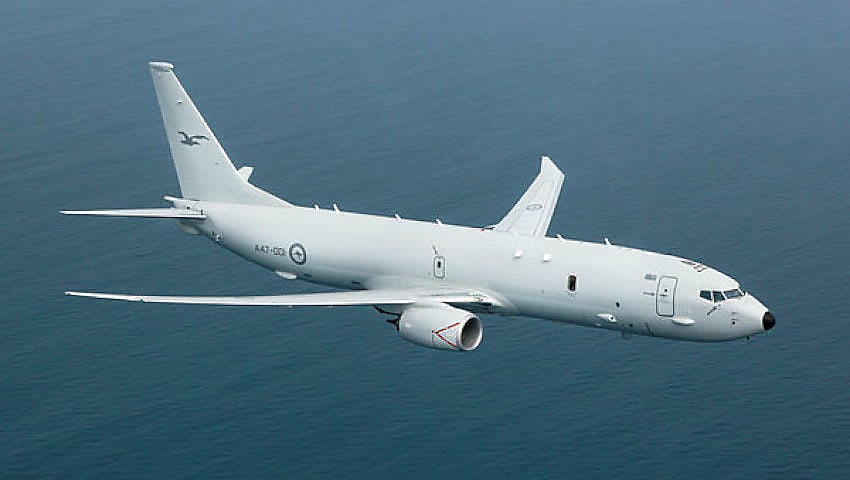Royal Australian Air Force P-8A Poseidon maritime patrol aircraft have joined allies from the US, Japan, Canada, India and New Zealand in Guam to conduct a series of joint training exercises to support interoperability and multinational anti-submarine warfare capabilities.
To continue reading the rest of this article, please log in.
Create free account to get unlimited news articles and more!
Sea Dragon 2021 centres on anti-submarine warfare (ASW) training and excellence to include 125 hours of in-flight training ranging from tracking simulated targets to the final problem of finding and tracking USS Chicago, a US Navy Los Angeles Class nuclear submarine.
During classroom training sessions, pilots and flight officers from all countries will build plans and discuss incorporating tactics, capabilities and equipment for their respective nations into the exercise.
Lieutenant Commander Kyle Hooker, Officer in Charge of the US Maritime Patrol and Reconnaissance aircraft from Patrol Squadron 5 (VP-5) explained the importance of the operations, stating, "As OIC, I am eager for the opportunity to further develop our partnerships with Japan, India, Canada, and Australia while at Sea Dragon 2021.
"The COVID environment will be challenging for all our participants, but I know we will come together to adapt and overcome while executing our goal of anti-submarine warfare interoperability."
Each exercise is graded, and the nation scoring the highest total points will receive the coveted Dragon Belt award. The belt was formally introduced last year when awarded to the Royal New Zealand Air Force.
As the US Navy's largest forward deployed fleet, US 7th Fleet routinely operates between 50-70 ships and submarines and 140 aircraft with approximately 20,000 Sailors.
7th Fleet's area of operation spans more than 124 million square kilometres, stretching from the International Date Line to the India/Pakistan border; and from the Kuril Islands in the north to the Antarctic in the south Pacific, providing security and stability to the region.
The 7th Fleet interacts with 35 other maritime nations to build partnerships that foster maritime security while conducting a wide-range of missions to support humanitarian efforts and uphold international laws and freedoms of the sea.
The Poseidon is a highly versatile, long-endurance platform capable of a range of mission types including maritime intelligence surveillance and reconnaissance and striking targets above and below the ocean’s surface.
The planned integration of the Long Range Anti-ship Missile (LRASM) into Air Force capability will also allow it to strike adversary surface vessels at significantly increased ranges.
The P-8A Poseidon is designed for long-range anti-submarine warfare; anti-surface warfare; and intelligence, surveillance and reconnaissance missions. It is capable of broad-area maritime and littoral operations. It is also effective for humanitarian and search and rescue missions.
The aircraft has advanced sensors and mission systems, including a state-of-the-art multi-role radar, high definition cameras, and an acoustic system with four times the processing capacity of the AP-3C Orions.
The P-8A is built specifically as a military aircraft. It is based on the proven commercial designs of Boeing's 737-800 fuselage, but has been substantially modified to include:
- A weapons bay;
- Under wing and under fuselage hard points for weapons; and
- Increased strengthening for low level (down to 200 feet) operations and high angle turns.
A derivative of the 737-800 Next Generation, the P-8 combines superior performance and reliability with an advanced mission system that ensures maximum interoperability in the future battlespace.
The P-8A aircraft has an extensive communications system including radios and data links across VHF, UHF, HF and SATCOM. An internal fuel capacity of almost 34 tonnes allows the P-8A to conduct low-level anti-submarine warfare missions at a distance of greater than 2,000 kilometres from base.
The P-8A is compatible for air-to-air refuelling with the KC-30A MRTT. Australia has committed to purchasing 12 P-8A Poseidon aircraft, which will replace the ageing fleet of P-3C Orion aircraft.
Australia's first aircraft arrived in Canberra on 16 November 2016, with the remaining 11 aircraft to be delivered by March 2020. IOC for the first eight P-8As is scheduled for the period 2017-20.

 Login
Login







